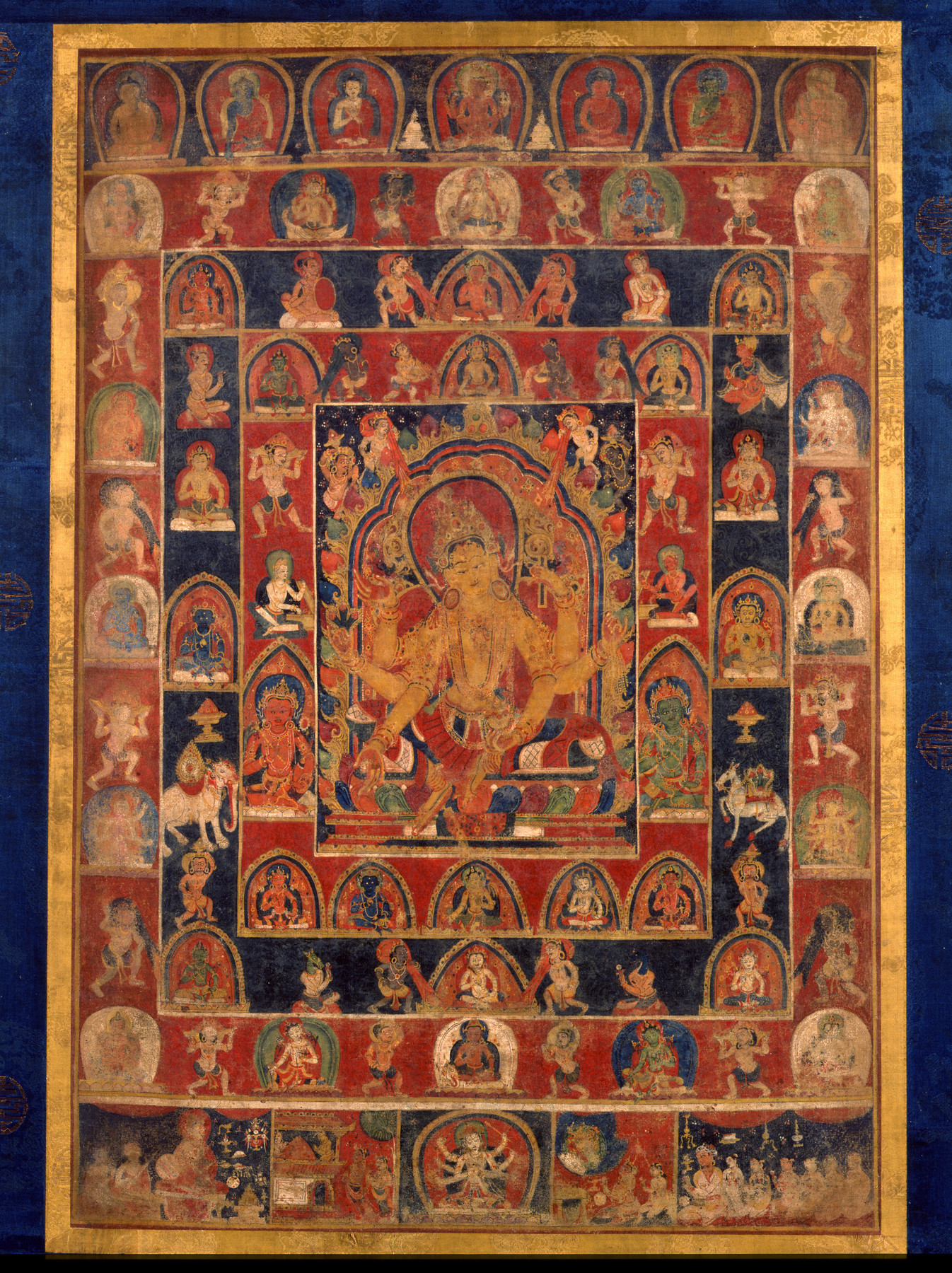Mandala of Vasudhara
(India, Nepal, and Tibet)
The Buddhist goddess Vasudhara bestows wealth and prosperity, and in Nepal she is worshiped as goddess of the harvest. During her festival each autumn, devotees commission mandalas like this one, with Vasudhara at the center surrounded by other deities, Buddhas, and bodhisattvas with whom she is associated. Golden in color, the six-armed Vasudhara holds clusters of grain and gems—two sources of wealth—in her two middle hands; she also holds a vase of abundance and a book, and makes the gestures of generosity (with her lower right hand) and praising the Buddha (with her upper right hand). Divinities known as "yakshas" perched above her throne carry platters with gems and pour streams of riches from large bags, motifs seen throughout the mandala.
Provenance
Provenance (from the French provenir, 'to come from/forth') is the chronology of the ownership, custody, or location of a historical object. Learn more about provenance at the Walters.
Ian Alsop, New York and Santa Fe [date and mode of acquisition unknown]; John and Berthe Ford, Baltimore, October 31, 1986, by purchase.
Exhibitions
| 2001-2003 | Desire and Devotion: Art from India, Nepal, and Tibet in the John and Berthe Ford Collection. The Walters Art Museum, Baltimore; Santa Barbara Museum of Art, Santa Barbara; Albuquerque Museum, Albuquerque; Birmingham Museum of Art, Birmingham; Hong Kong Museum of Art, Hong Kong. |
Geographies
Nepal (Place of Origin)
Measurements
Framed H: 44 × W: 28 3/8 × D: 2 5/8 in. (111.8 × 72 × 6.6 cm)
Credit Line
Promised gift of John and Berthe Ford
Location in Museum
Not on view
Accession Number
In libraries, galleries, museums, and archives, an accession number is a unique identifier assigned to each object in the collection.
In libraries, galleries, museums, and archives, an accession number is a unique identifier assigned to each object in the collection.
F.143


